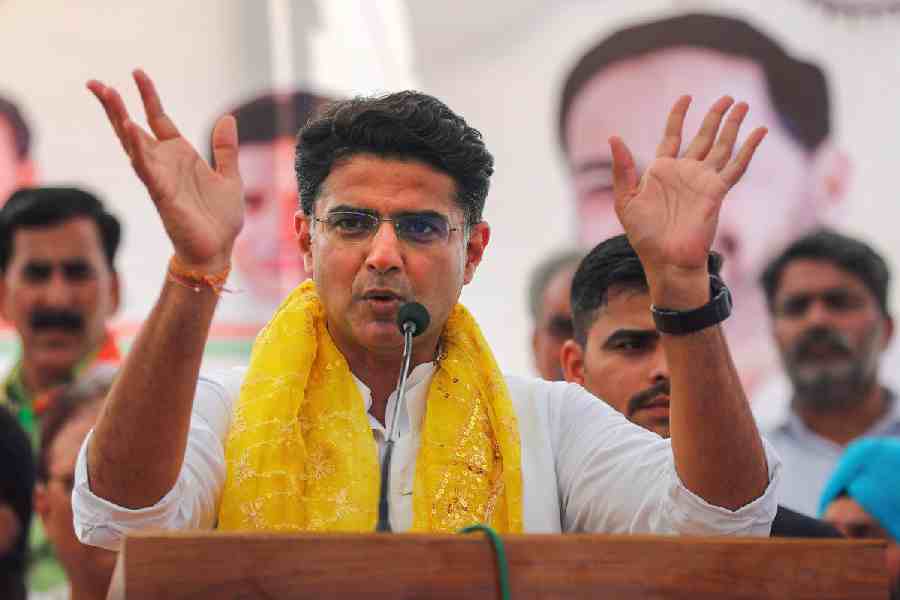Ganesh Haloi was born way back in 1936 in the Jamalpur district of Bangladesh. Yet, at his stage in life, he has been painting tirelessly throughout these nightmarish times and has given free rein to his imagination, which is never afraid of deviating from tried and tested formulae. His most recent crop of paintings, which can be seen online in Akar Prakar’s exhibition titled Sense & Sensation — Paintings in Ink & Brush that began on March 20, proves once again that experimentation is second nature to Haloi. In stark black and white, Haloi explores the possibilities of dualism through a series of paintings in which geometric forms are placed in conjunction with traces of delicate, decorative elements forming sharp contrasts, hitherto unseen in this artist’s vast oeuvre. There are some whimsical ones as well, where Haloi gives shape to bold lines that come close to cartoons as they seem to smile back at the viewer, or resemble the characters of a waggish language. These works return to the radiant memories of the village in which he grew up before he, along with his family, sought refuge in India.
The paddy fields, rivers and water bodies — elements that are synonymous with Haloi’s paintings — are all present, but the course of the river has become more curvaceous, and the confluence of three rivers is reduced to a conjunction of sharp angles. These bring them closer to modernist textile designs and move them even further from the geography that resides in Haloi’s memory, although that continues to be the primary impetus of most of his work. Recollected decades later, they are stripped of all
details of vegetation and of human habitation. The paddy fields, too, are reduced to lightning fast calligraphic strokes that he executes with the confidence and skill of a past master. The undulating waves of a river turn into a flurry of tiny dashes that could easily be mistaken for the running stitches of a kantha. Memories of the step wells of Rajasthan reappear in certain compositions. But there are just touches of these. They are never an overwhelming presence.
Haloi does not rest on his laurels. His work recalls the visual experiences of his childhood, but given his austerity, he never lapses into nostalgia. This time, however, he seems to have gone off at a tangent and allowed slivers of decorative elements to enter the space that is otherwise bare. Here he gives full play to the idea of dualism as binaries coexist in this space where colours are present and absent simultaneously. The tiny flowers, leaves and creepers that are part of the ornamental contrivance could remind viewers of the tailpieces of books. In one work, two colourful members of the avian community known for their lush plumage rear their pretty heads in the pictorial space. They were inspired by the folk toys of which Haloi has a huge collection at his home.
However sophisticated Haloi’s work may appear to be, so rooted is he in the bedrock realities of Bengal that the rich folk culture of this fertile and riverine region is a key to the understanding of his art. Often his compositions and dancing lines seem to sway to the rhythm of Bengal’s folk music. The lines are like a thistledown caught in a breeze, carefree, capricious and full of life.










